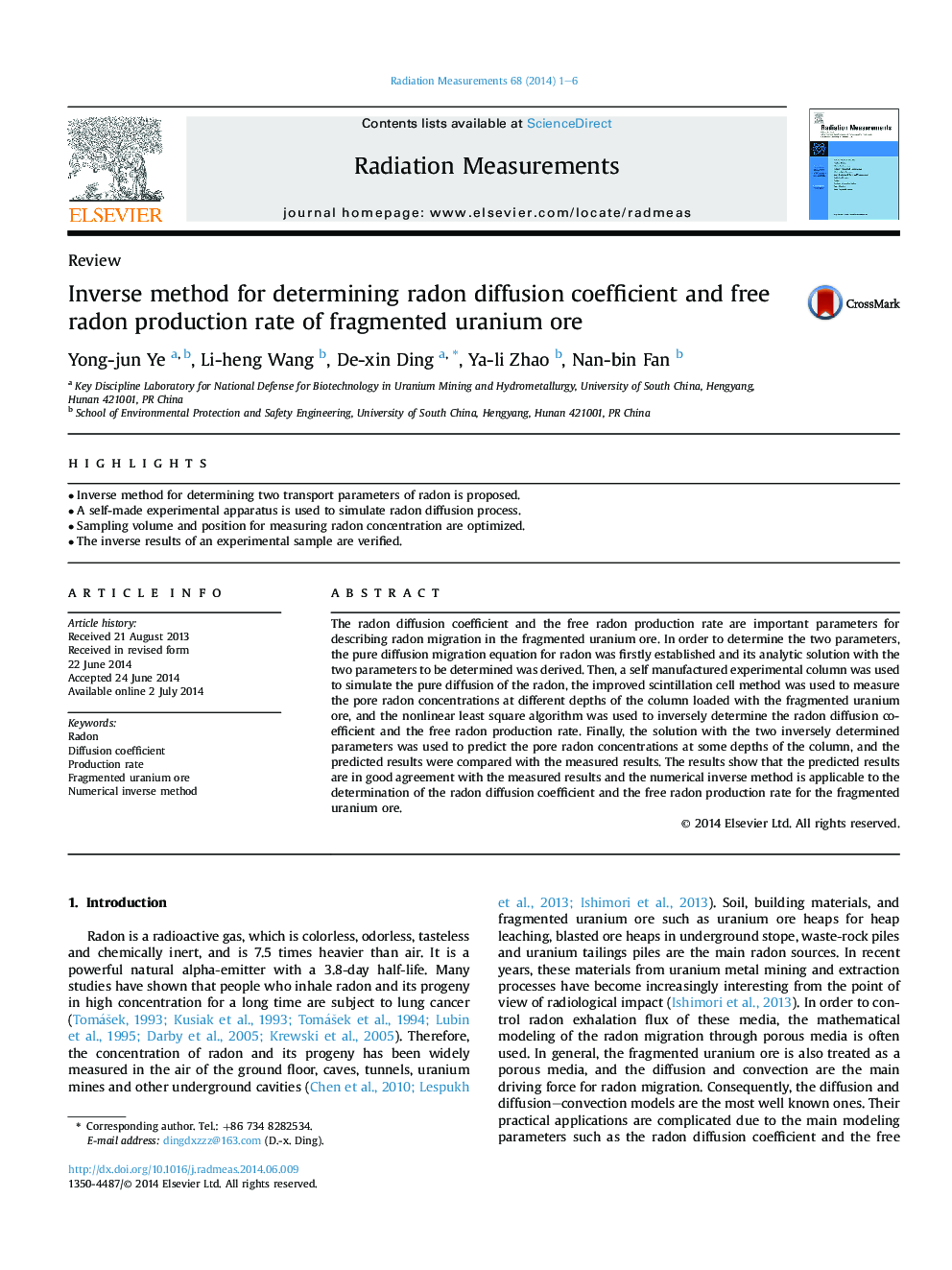| Article ID | Journal | Published Year | Pages | File Type |
|---|---|---|---|---|
| 8250894 | Radiation Measurements | 2014 | 6 Pages |
Abstract
The radon diffusion coefficient and the free radon production rate are important parameters for describing radon migration in the fragmented uranium ore. In order to determine the two parameters, the pure diffusion migration equation for radon was firstly established and its analytic solution with the two parameters to be determined was derived. Then, a self manufactured experimental column was used to simulate the pure diffusion of the radon, the improved scintillation cell method was used to measure the pore radon concentrations at different depths of the column loaded with the fragmented uranium ore, and the nonlinear least square algorithm was used to inversely determine the radon diffusion coefficient and the free radon production rate. Finally, the solution with the two inversely determined parameters was used to predict the pore radon concentrations at some depths of the column, and the predicted results were compared with the measured results. The results show that the predicted results are in good agreement with the measured results and the numerical inverse method is applicable to the determination of the radon diffusion coefficient and the free radon production rate for the fragmented uranium ore.
Related Topics
Physical Sciences and Engineering
Physics and Astronomy
Radiation
Authors
Yong-jun Ye, Li-heng Wang, De-xin Ding, Ya-li Zhao, Nan-bin Fan,
